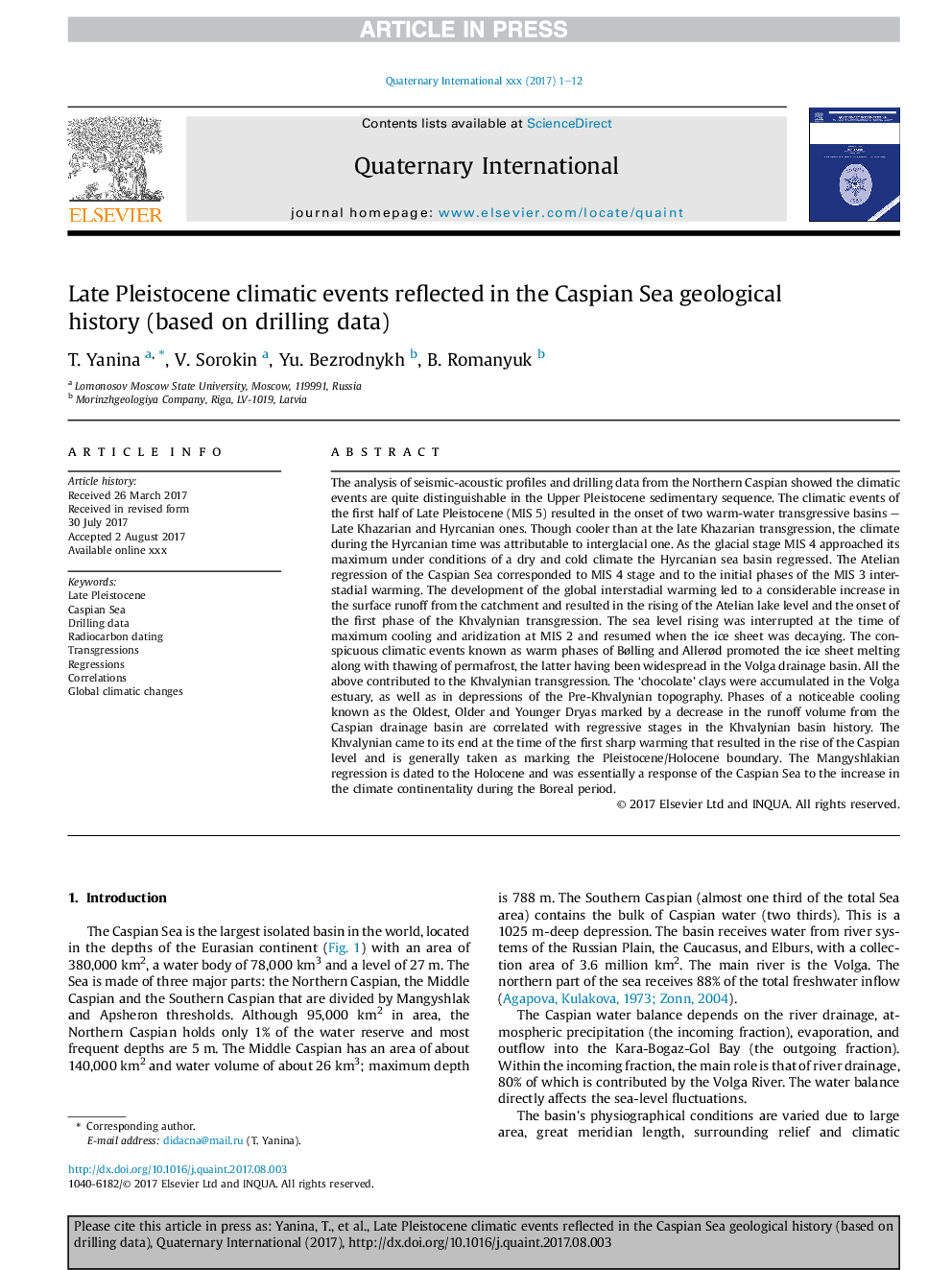| کد مقاله | کد نشریه | سال انتشار | مقاله انگلیسی | نسخه تمام متن |
|---|---|---|---|---|
| 7450838 | 1484056 | 2018 | 12 صفحه PDF | دانلود رایگان |
عنوان انگلیسی مقاله ISI
Late Pleistocene climatic events reflected in the Caspian Sea geological history (based on drilling data)
ترجمه فارسی عنوان
وقایع آب و هوایی پلهیستوکن در اواخر تاریخ زمین شناسی دریای خزر (بر اساس داده های حفاری)
دانلود مقاله + سفارش ترجمه
دانلود مقاله ISI انگلیسی
رایگان برای ایرانیان
کلمات کلیدی
پالیستوسن بعدا، دریای خزر، داده های حفاری، قدمت رادیو کربن، تجاوزات رگرسیون ها، همبستگی، تغییرات اقلیمی جهانی،
موضوعات مرتبط
مهندسی و علوم پایه
علوم زمین و سیارات
زمین شناسی
چکیده انگلیسی
The analysis of seismic-acoustic profiles and drilling data from the Northern Caspian showed the climatic events are quite distinguishable in the Upper Pleistocene sedimentary sequence. The climatic events of the first half of Late Pleistocene (MIS 5) resulted in the onset of two warm-water transgressive basins - Late Khazarian and Hyrcanian ones. Though cooler than at the late Khazarian transgression, the climate during the Hyrcanian time was attributable to interglacial one. As the glacial stage MIS 4 approached its maximum under conditions of a dry and cold climate the Hyrcanian sea basin regressed. The Atelian regression of the Caspian Sea corresponded to MIS 4 stage and to the initial phases of the MIS 3 interstadial warming. The development of the global interstadial warming led to a considerable increase in the surface runoff from the catchment and resulted in the rising of the Atelian lake level and the onset of the first phase of the Khvalynian transgression. The sea level rising was interrupted at the time of maximum cooling and aridization at MIS 2 and resumed when the ice sheet was decaying. The conspicuous climatic events known as warm phases of Bølling and Allerød promoted the ice sheet melting along with thawing of permafrost, the latter having been widespread in the Volga drainage basin. All the above contributed to the Khvalynian transgression. The 'chocolate' clays were accumulated in the Volga estuary, as well as in depressions of the Pre-Khvalynian topography. Phases of a noticeable cooling known as the Oldest, Older and Younger Dryas marked by a decrease in the runoff volume from the Caspian drainage basin are correlated with regressive stages in the Khvalynian basin history. The Khvalynian came to its end at the time of the first sharp warming that resulted in the rise of the Caspian level and is generally taken as marking the Pleistocene/Holocene boundary. The Mangyshlakian regression is dated to the Holocene and was essentially a response of the Caspian Sea to the increase in the climate continentality during the Boreal period.
ناشر
Database: Elsevier - ScienceDirect (ساینس دایرکت)
Journal: Quaternary International - Volume 465, Part A, 20 January 2018, Pages 130-141
Journal: Quaternary International - Volume 465, Part A, 20 January 2018, Pages 130-141
نویسندگان
T. Yanina, V. Sorokin, Yu. Bezrodnykh, B. Romanyuk,
